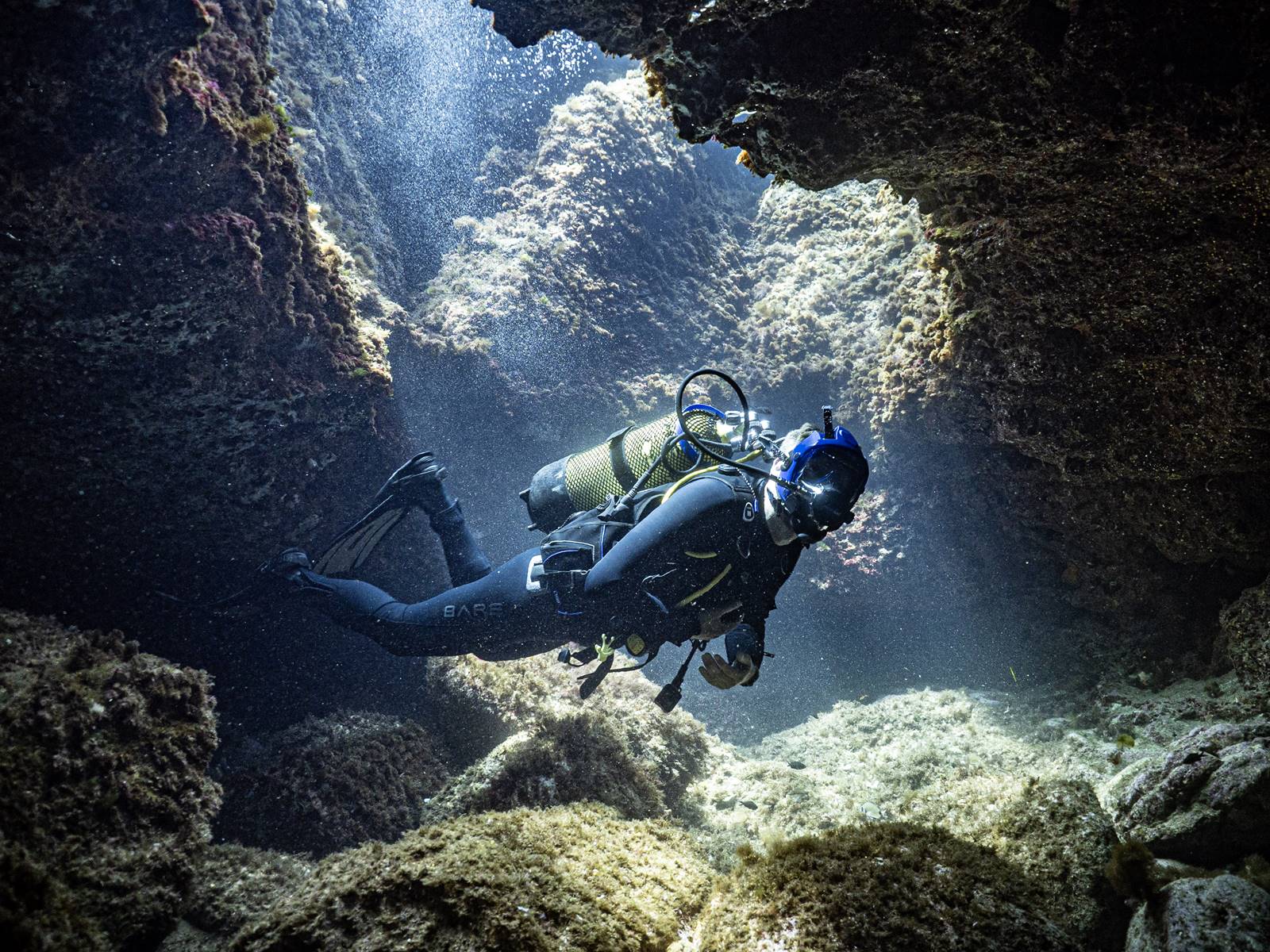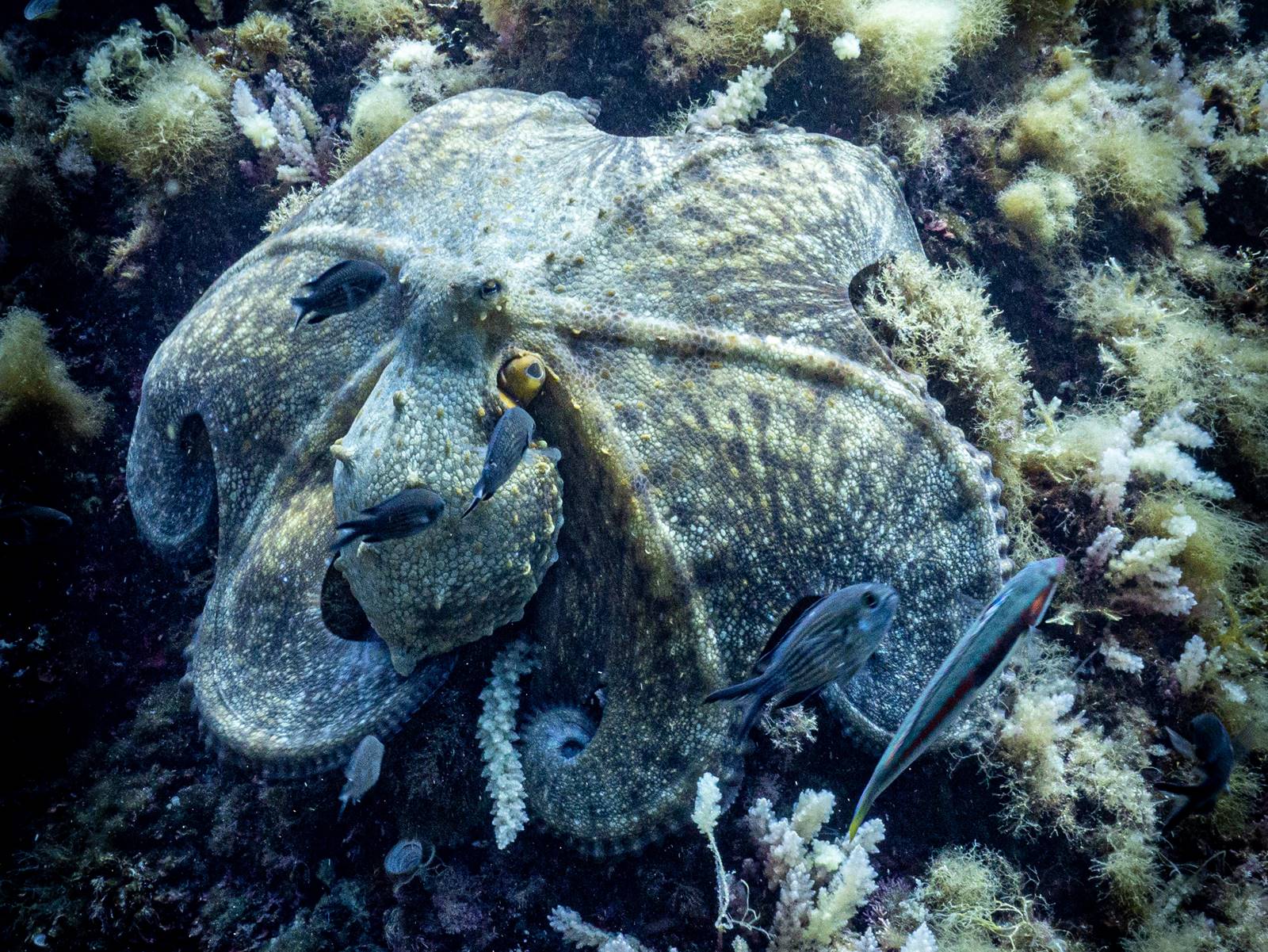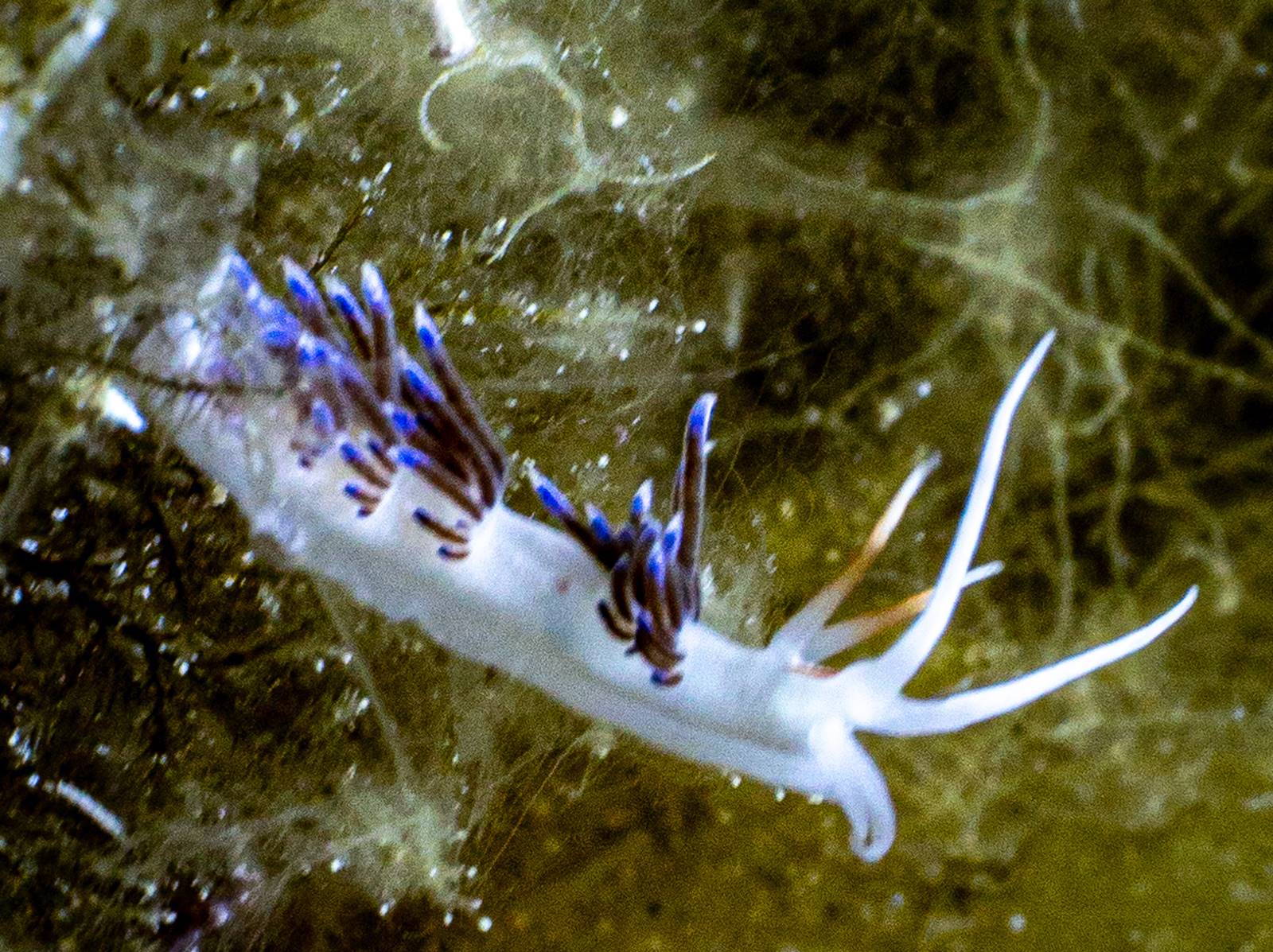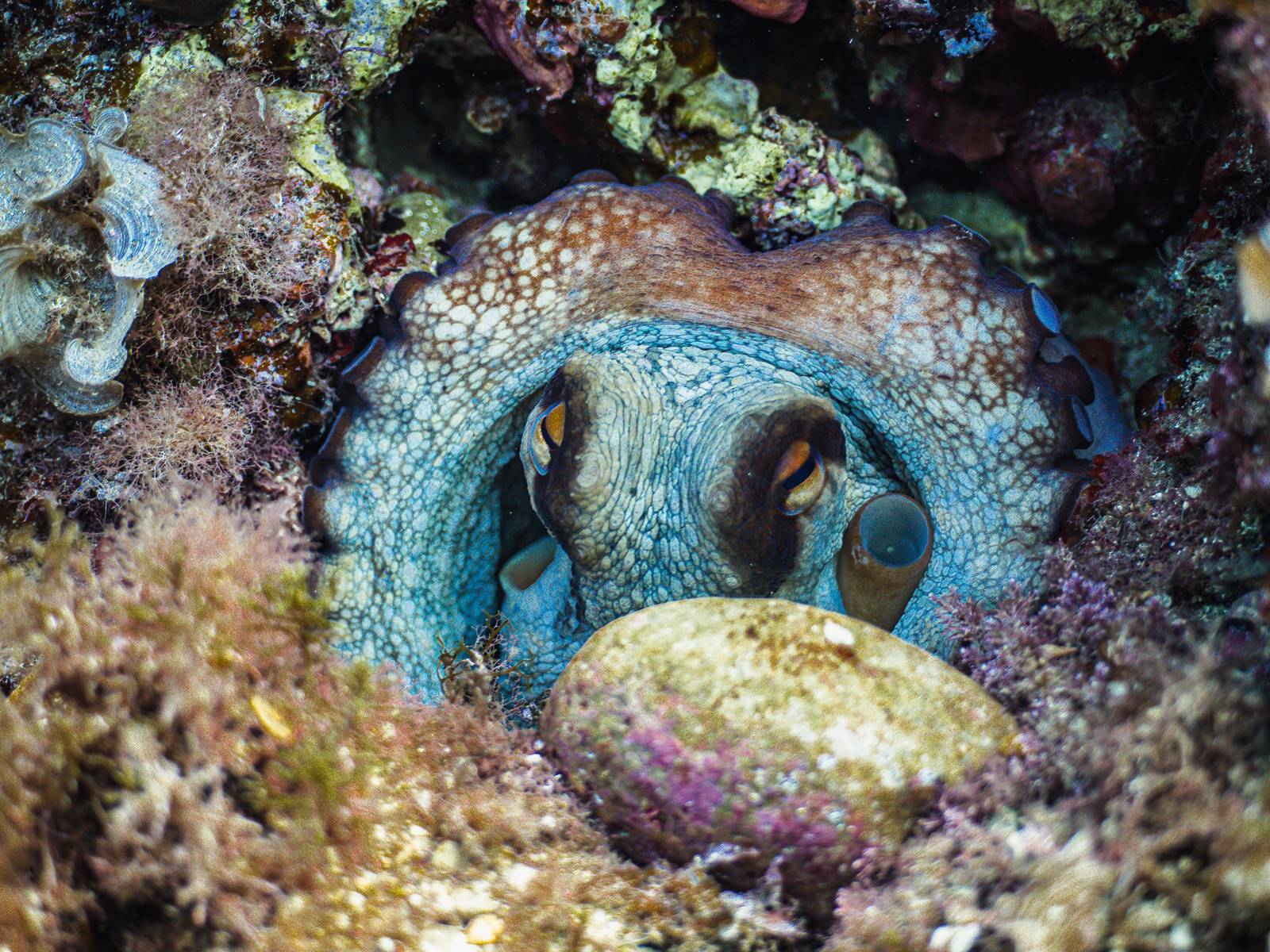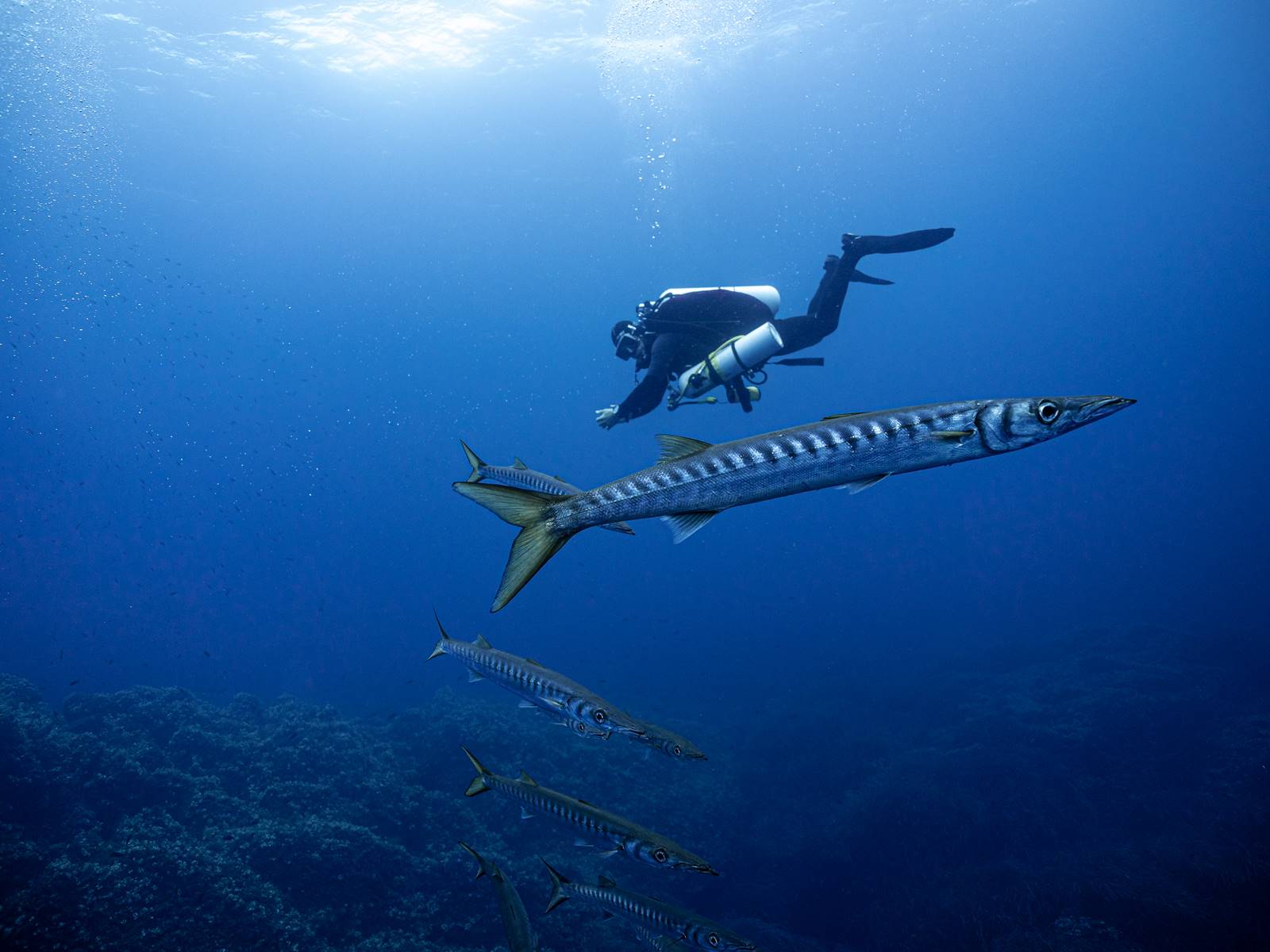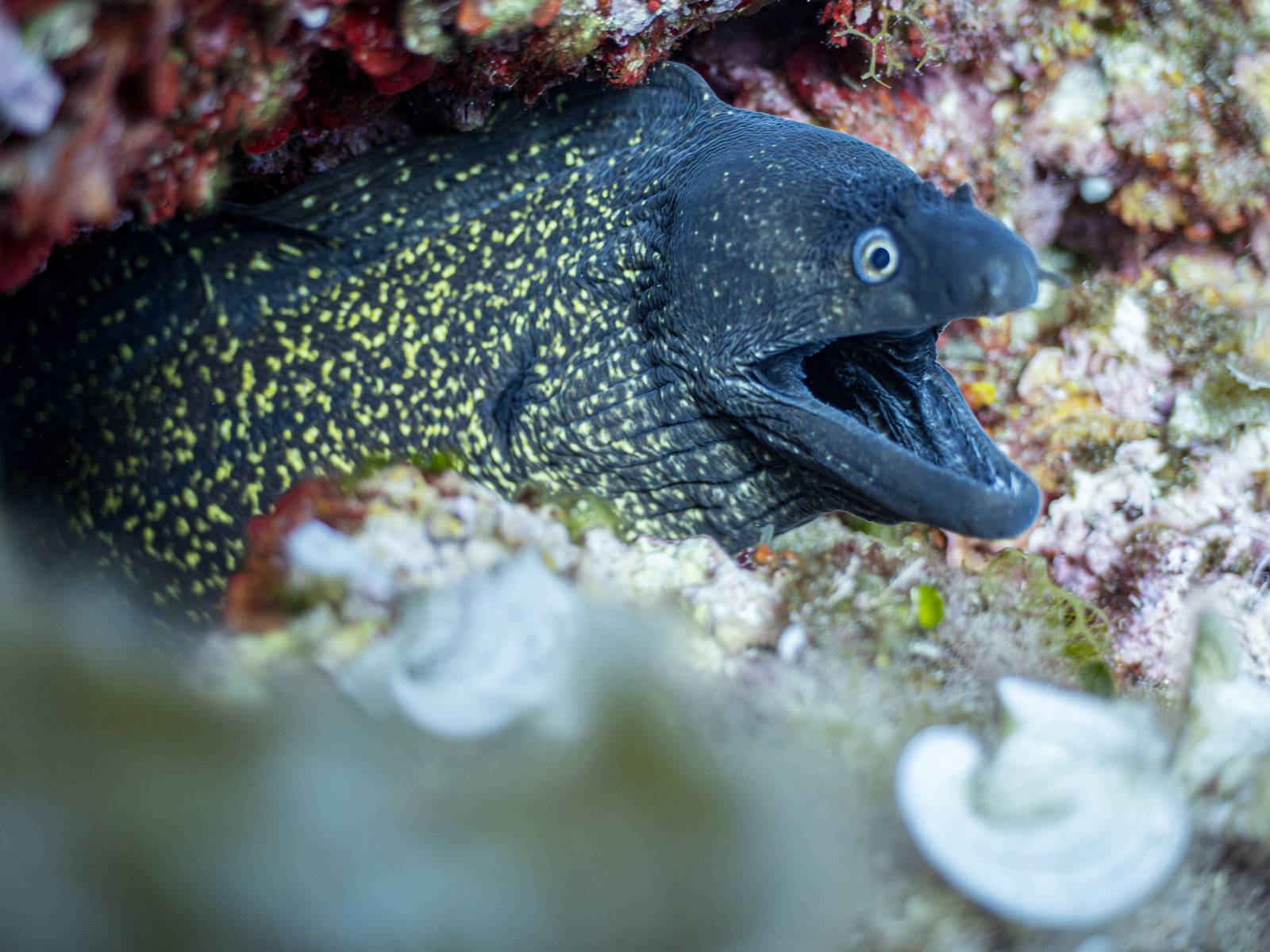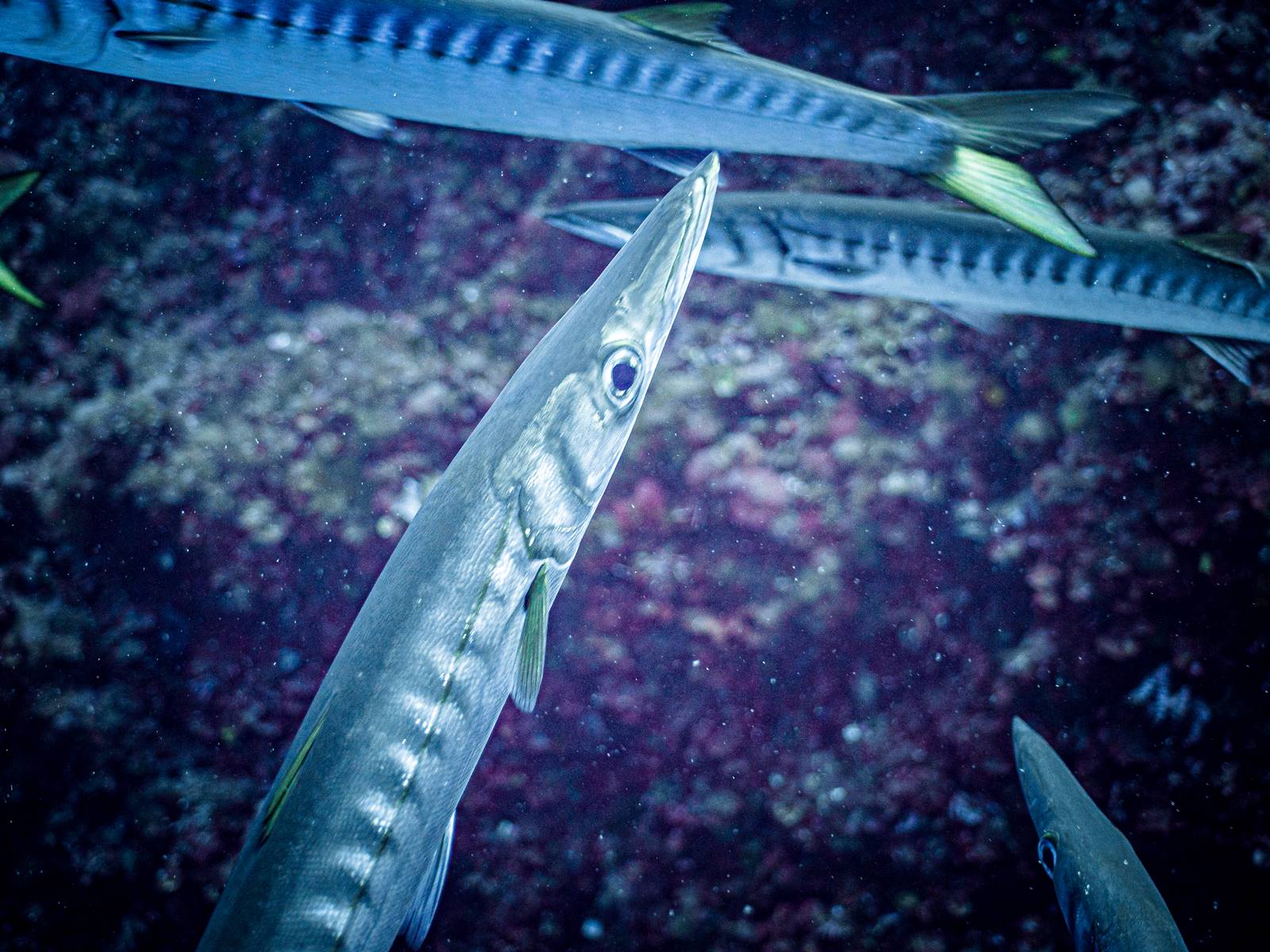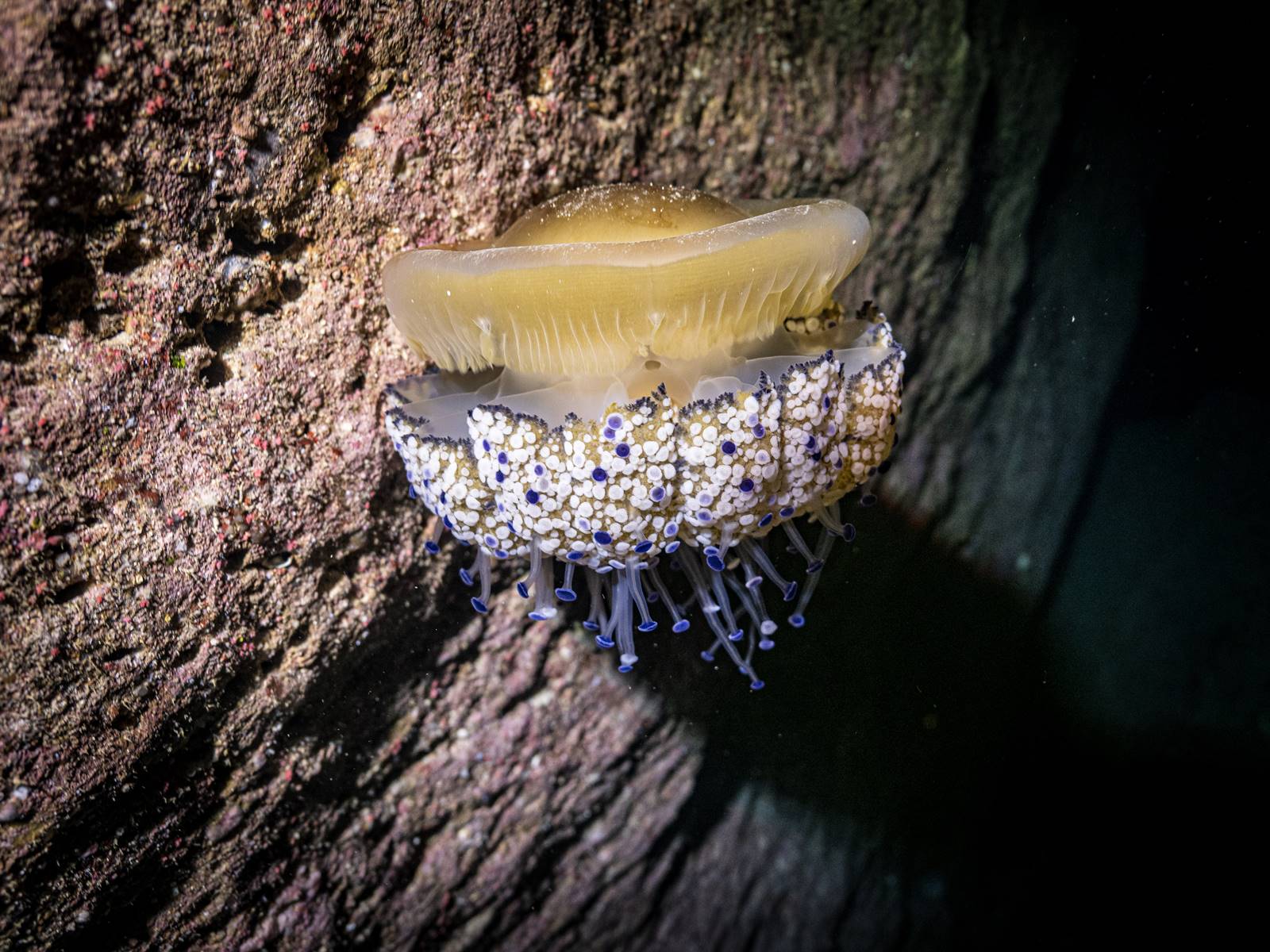Diving in the north side of Menorca
The natural marine reserve of Menorca got that status the 24th of June from 1999 from the BOIB number 81. Its one of the places from North Menorca where fishing its forbidden or under strict control.
Thanks to that the fauna developed through the years , creating an amazing landscape for those who choose snorkel.
Its easy to see fishes like Moray eel’s , groupers , octopus and “salmonetes” at the north side of Menorca.
The whole reserve its protected against aggressive fishing methods like trawl fishing.
The reserve has an 5.119 marine ha from Fornells bay (eastern limit) til Cape Gros (western limit). Official data says there are 628 benthic species at the reserve , among the 5.119 marine ha.
Between the Cap Gros and the Punta des Morter, on the north coast of the island, the Marine Reserve of the North of Menorca, constitutes one of the last virgin areas of the Mediterranean. Its waters treasure sea beds of great natural beauty where a rich and varied flora and fauna lives.
Its bottoms, which are over 30 meters deep very close to the coast, present a great heterogeneity of habitats, among which the posidonia barrier reef of Sa Nitja, the Cystoseira algae communities and the extensive rocky communities stand out for their ecological interest. Home to hundreds of fish.
Dive Sites
We will take you at the Natural Marine Reserve , where we will have the chance to see a huge and diverse amount of life , like : tiny barracudas , groupers , nudibranchs , corvallos , serviolas , octopus , lobsters , menorcan lobsters , etc…
Also there are amazing caves around to discover.
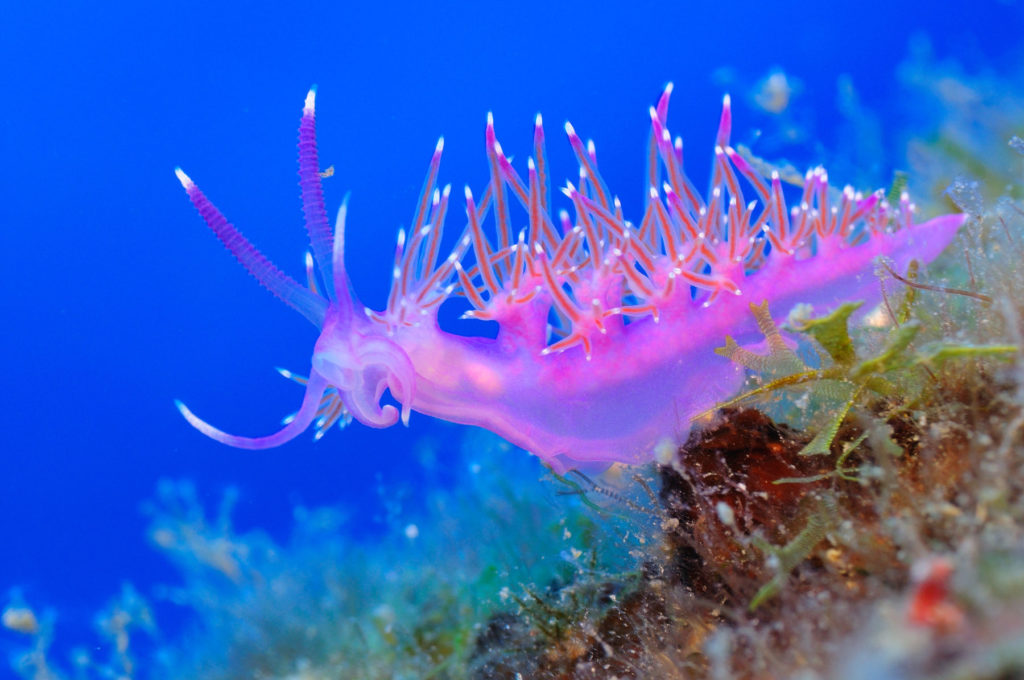
Llosa del Patró Pere
This is one of the most beautiful dives in the Marine Reserve, given the amount of aquatic life that we can see there (huge groupers, baracudas, corbe or sea bream, octopus, nudibranchs) and easily accessible at all levels. We can also note a large arch, as well as a fault that we can cross. The top of the slab is 10 meters deep and the deepest part about 25 meters. Diving is a route around this slab.
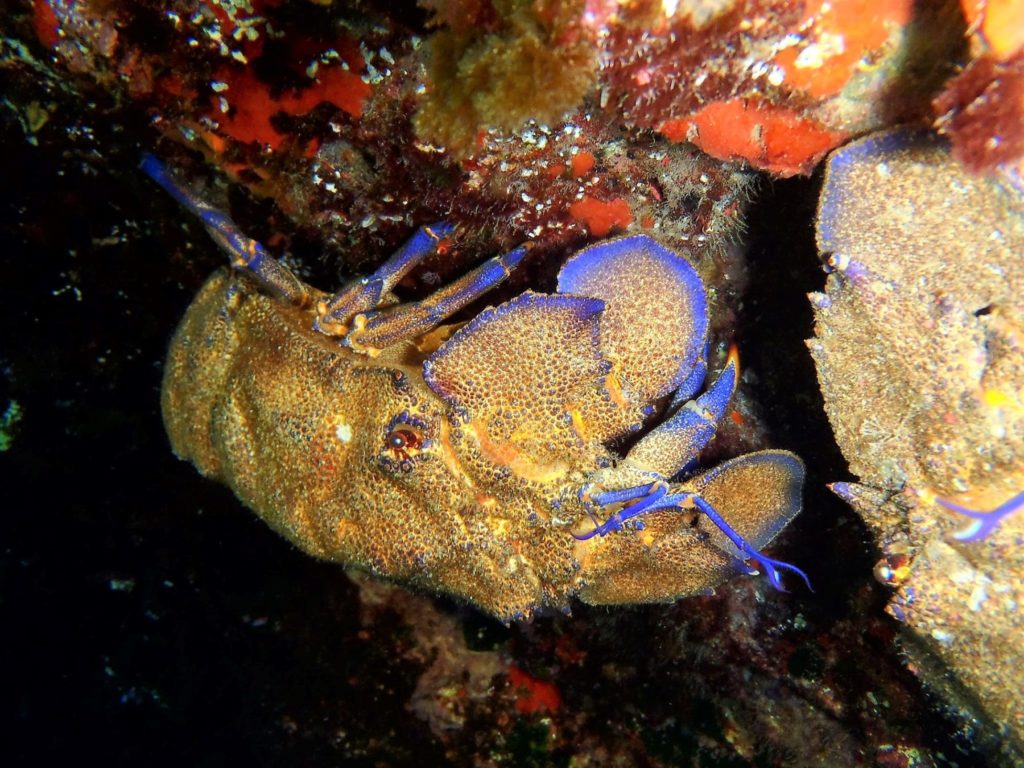
Llosa dels Ocellers
Diving in this area near Cape Cavalleria, right in the middle of the Marine Reserve on the North Coast of Menorca is one of the most entertaining and surprising experiences on the Island. One of the great attractions of this immersion, which can go up to 27 meters deep, is the great diversity of marine fauna, the opportunity to see groupers and barracudas, but also lobsters and small nudibranchs. But perhaps the biggest attraction is the existence of numerous tunnels, open and closed canals and small caves that make diving in the Llosa dels Ocellers a great adventure.
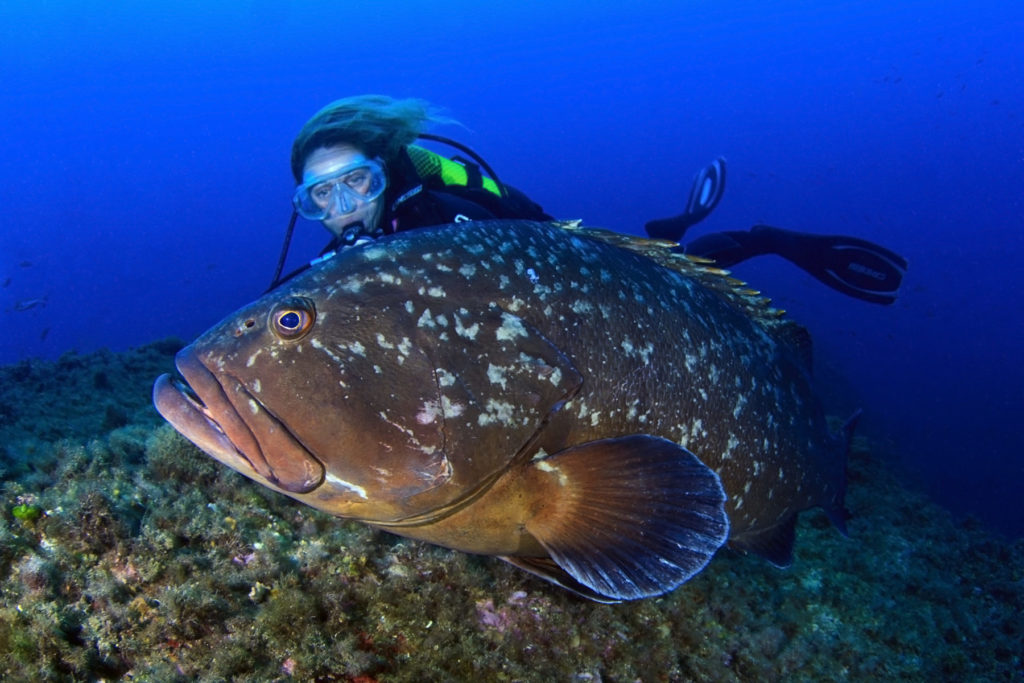
Isla de Porros
« Porros » Island is the northernmost point of Menorca and the Marine Reserve. It is a wall dive, very rich in fauna: groupers, barracudas, teeth and many badèche groupers. Beginner divers can dive in the shallowest part 8 meters and the most experienced up to 30 meters deep.
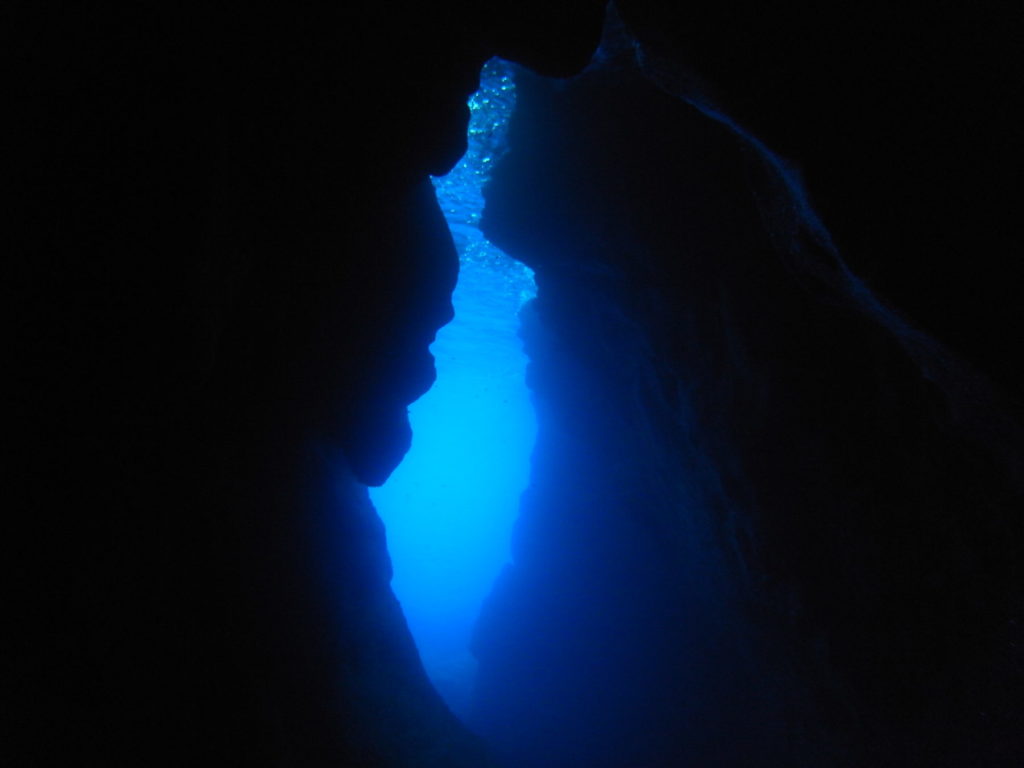
Coves d’es Llamp
It is a series of four caves that you enter on one side and exit from the other. The backlights are spectacular and the diving is suitable for all levels, since the maximum depth is 16 meters.
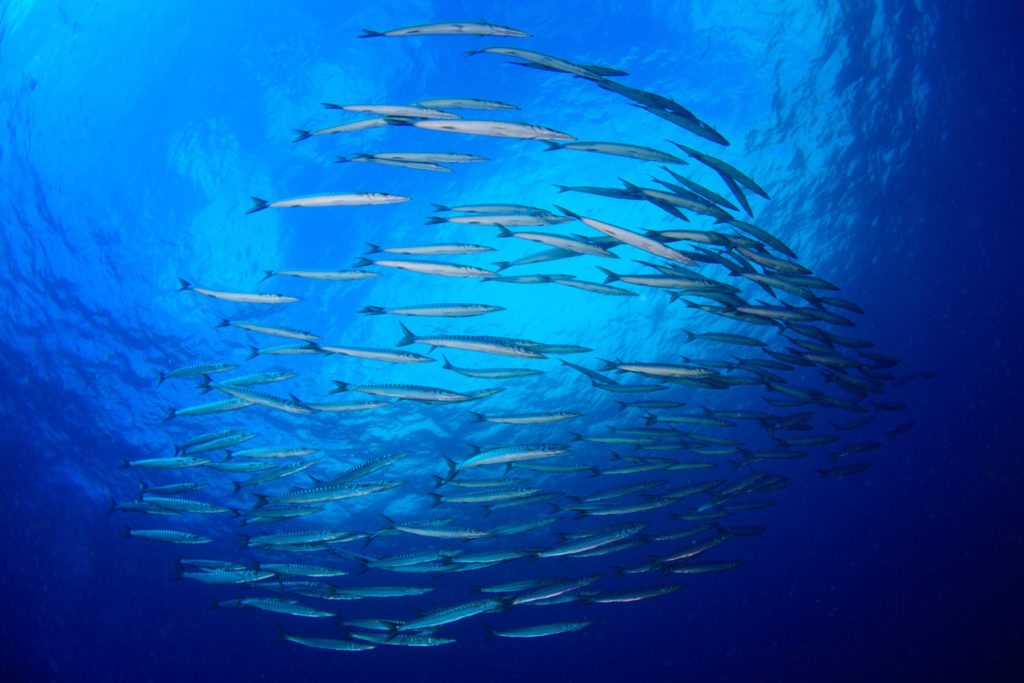
Tobogán
In this dive, we are on the south face of the island of Porros. We will anchor the boat next to the island, at a depth of 4-5 meters, so that the descent is comfortable and easy. The visit begins by crossing a tunnel similar to a toboggan. We will find it at a depth of 2 meters, while the exit is at 12. Here we can enjoy one of the best backlighting of Menorca. Leaving the toboggan, we turn right and we will look for a series of rocky tongues, where we will reach our maximum depth (about 25 meters). It is an area where we can see large groupers, servolas, barracudas, octopuses … Then we will climb on a rocky platform, about 10 meters deep, which unites the island of Menorca to that of Porros, known as Es Pas. We will explore the platform during our return to the boat.
Finally, we can make the slide upside down, which will allow us to re-appreciate it from another angle. Finally, and as always, we will stop our security.
This dive has an even more beautiful alternative route, where in addition to the rich fauna of the reserve, you will also be able to observe ancient anchors and beautiful backlights. Do you want to find out? Visit us
MAXIMUM DEPTH: 25 m
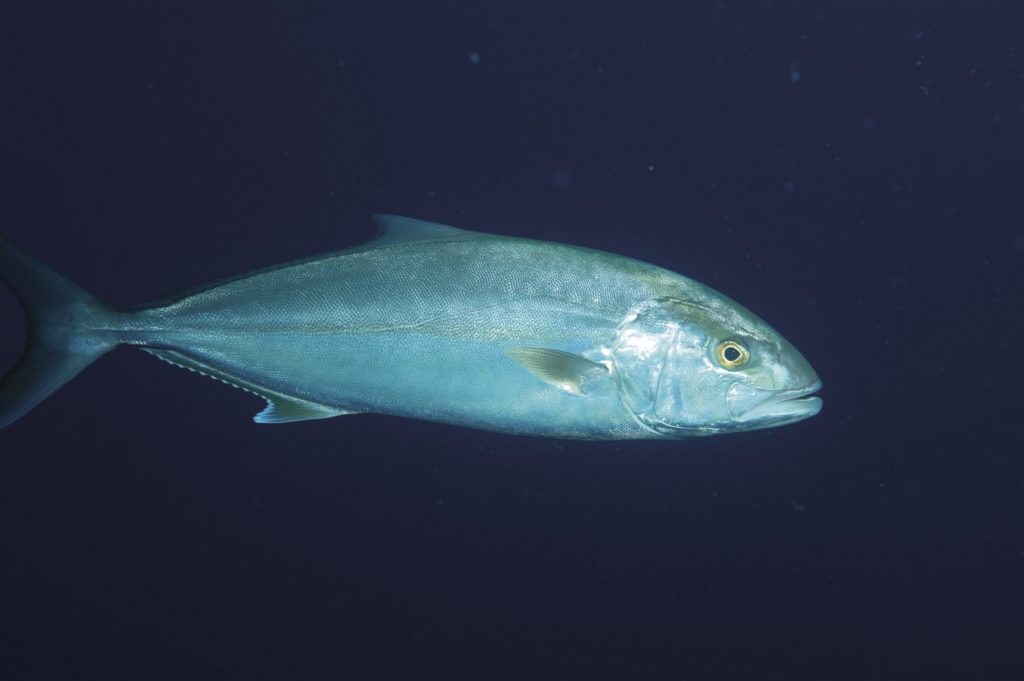
Punta d’es Morter
This dive is located leaving the mouth of Fornells Bay on the right, just at the edge of the reserve. Simple dive suitable for all levels, with spectacular scenery. Pinnacles, canyons, tunnels and all kinds of holes dot this bottom. At the end of the visit, you will think that you are in Mexico, because you will be able to enjoy a “cenote” wonder, where the backlights will be the icing on the cake of this beautiful dive.
MAXIMUM DEPTH: 25 m
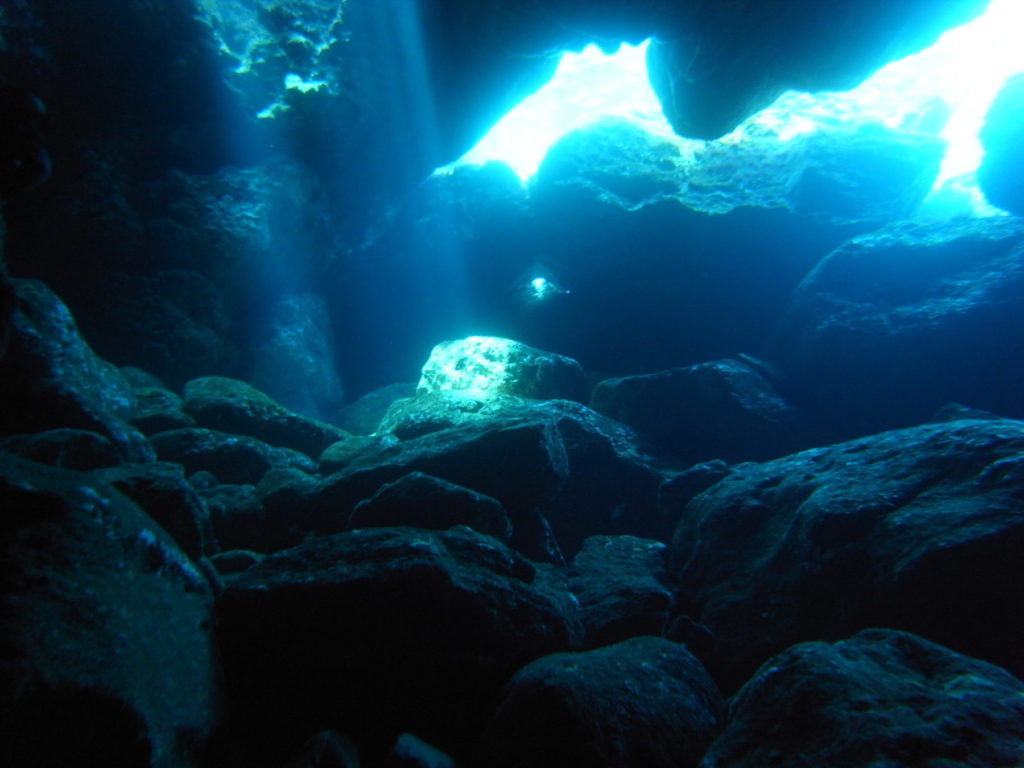
En Frare
his beautiful dive is located outside the marine reserve, but we can enjoy the best collection of backlights in all of northern Menorca. We will start diving near the coast wall, at a depth of 10 meters. After having traversed, for approximately 15 minutes, a rocky bottom populated with large stones shaped by the force of the tramuntana, we will cross a beautiful natural arch, where we will reach our maximum depth, and we will hang on the wall, leaving it to our left. At this time, prepare your senses because we will start to “sew” the wall, exploring a succession of visors and holes that will amaze us with their play of light. Perfect immersion for lovers of nudibranchs, small life and photography.
MAXIMUM DEPTH: 18 m
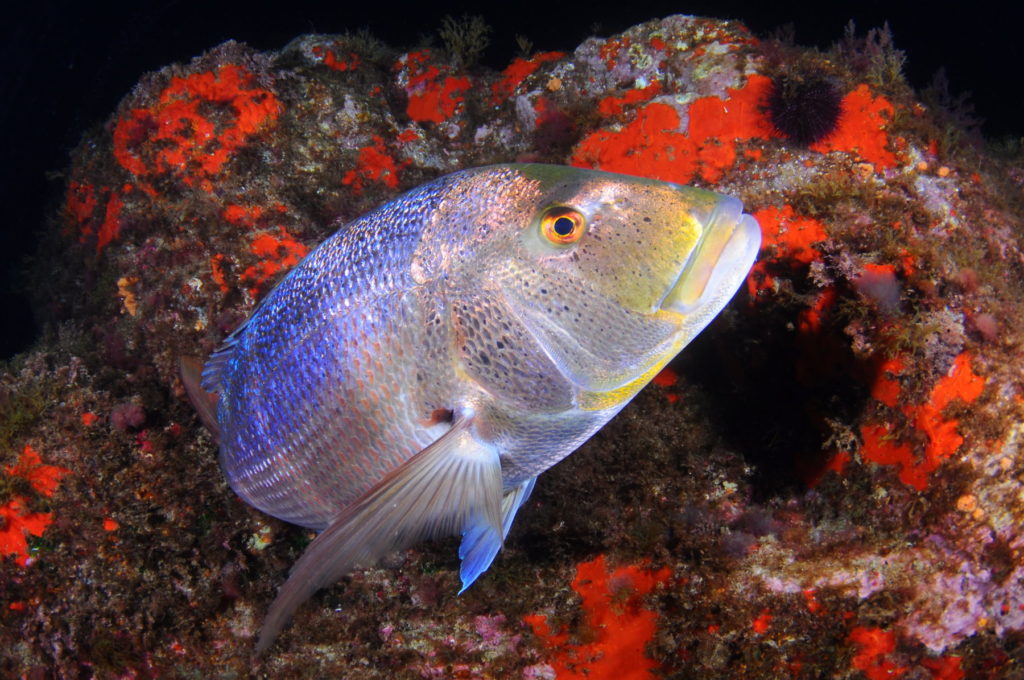
Isla de Tirant
Island that emerges at the mouth of Fornells Bay, a few minutes from our diving center. We will drop anchor in very shallow waters, in a natural swimming pool that forms under the shelter of the rock mass that is Illa Tirant. This dive allows several laps depending on the level of experience of the divers. Here you can either start the dive with a magnificent “baptism”, start your Open Water Diver course or take one of the longest and most beautiful dives in the whole reserve. Cicadas, groupers, dentex, sea bass, sea bream and nudibranchs populate this background. Delight in the brook banks that surround you as you pass through canyons and natural rock arches. Illa Tirant is a little gem that will never cease to amaze you.
MAXIMUM DEPTH: 18 m
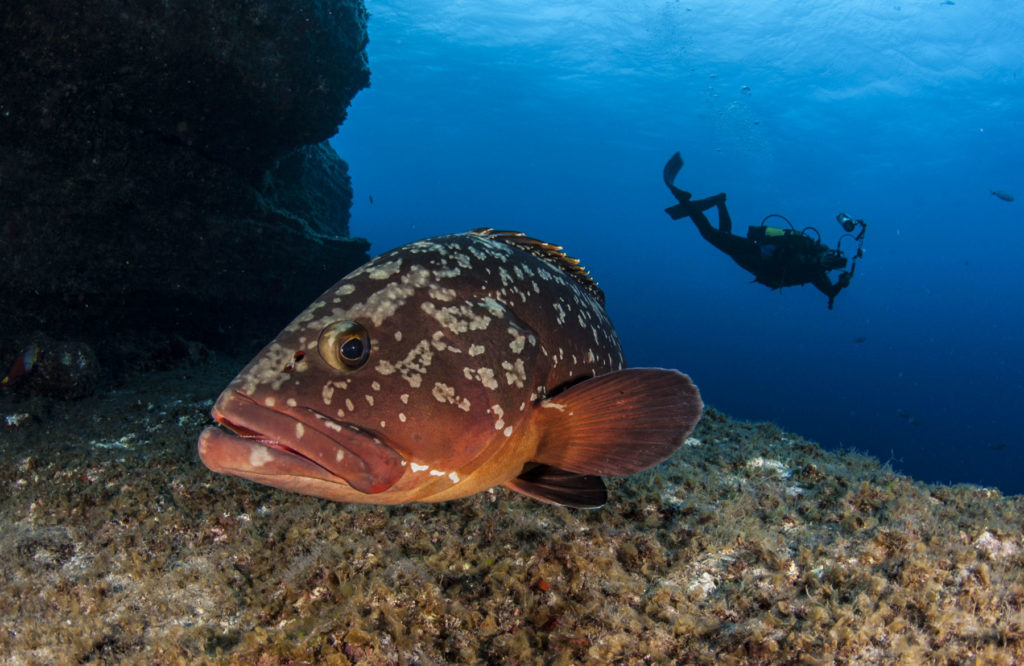
S’Olla
Immersion located on the wall of Cape Cavalleria, inside the corner which gives it its name. This is a wall dive, which requires some experience and good buoyancy, due to the depth that can be reached. We will start the tour leaving the wall on our right, until we reach an agglomeration of large blocks of stone. Here we can play and dive among them as if it were a labyrinth. The return will be at a shallower depth and with the wall on our left.
MAXIMUM DEPTH: 25 m

Es Pas
Simple and magnificent dive in front of the Illa de Porros. We will drop anchor on an underwater mountain which practically reaches the surface. This mountain is hollow, so we can cross it and enjoy a magnificent backlight. Then we will go in search of a large sandy area, where we will be able to see parsnips, sea eagles, raos and xoric. Nowhere else in the reserve can you find such an abundance of these species. Finally, we will return to the boat, at a shallow depth, exploring a spectacular white rocky platform, where a large number of moray eels reside.
MAXIMUM DEPTH: 20 m
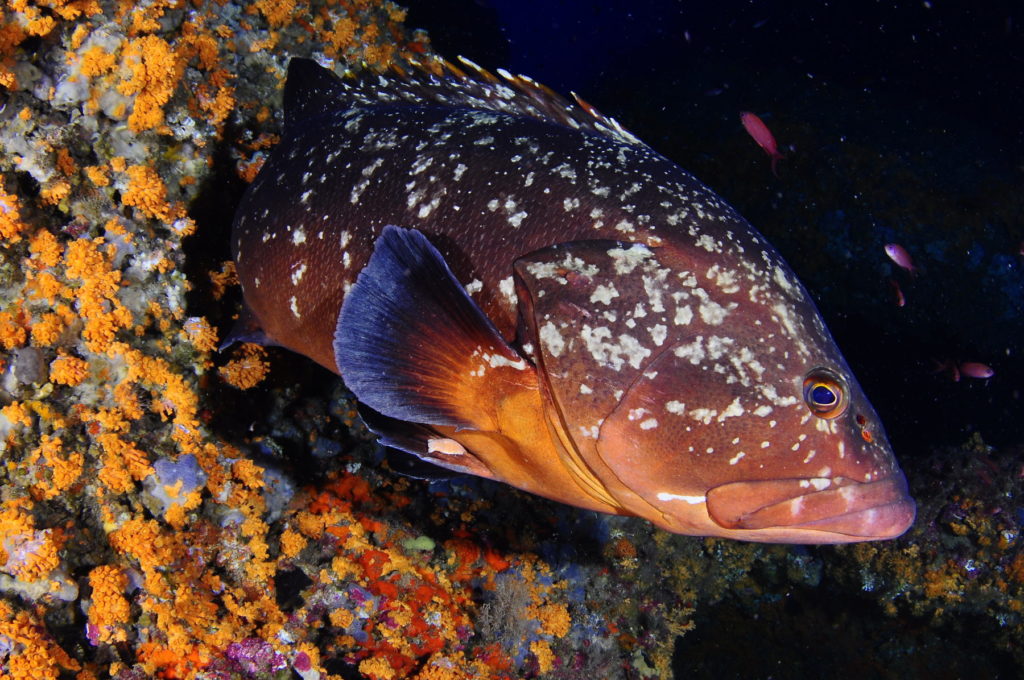
Islote de Sajatia
Also known as Cala Viola de Llevant. Simple and beautiful dive located in cape cavallería. The anchoring is done in a protected creek about 5 meters deep. We will start the visit leaving the Cape Wall on our right side, gradually gaining depth. Soon we will find a canyon that will take us up to 15 meters. In front of us, at a depth of 20 to 25 meters, we will see a large plain dotted with rocks and sand patches, where large groupers like to hide and inhabit both parsnips and sea eagles. We will climb gradually, losing depth, crossing several natural rock arches where we can find a large number of cicadas. We will go all the way leaving the wall on our left. Before reaching the boat, this dive will give us one last surprise. We can explore a small and simple cave where a large number of cicadas and shrimps live.
MAXIMUM DEPTH: 25 m
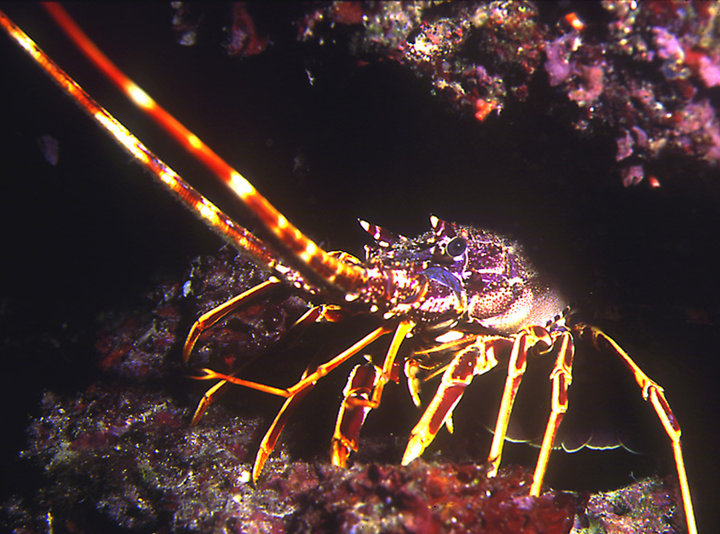
Langostas
If you want to see lobsters in Menorca, this is your dive. Only suitable for experienced divers, as we have to descend below 30 meters. However, seeing cracks in the wall filled with lobster antennae is priceless. It will be a little shorter dive so as not to exceed the decompression limits, but it will be worth it. We assure you.
MAXIMUM DEPTH: 35 m
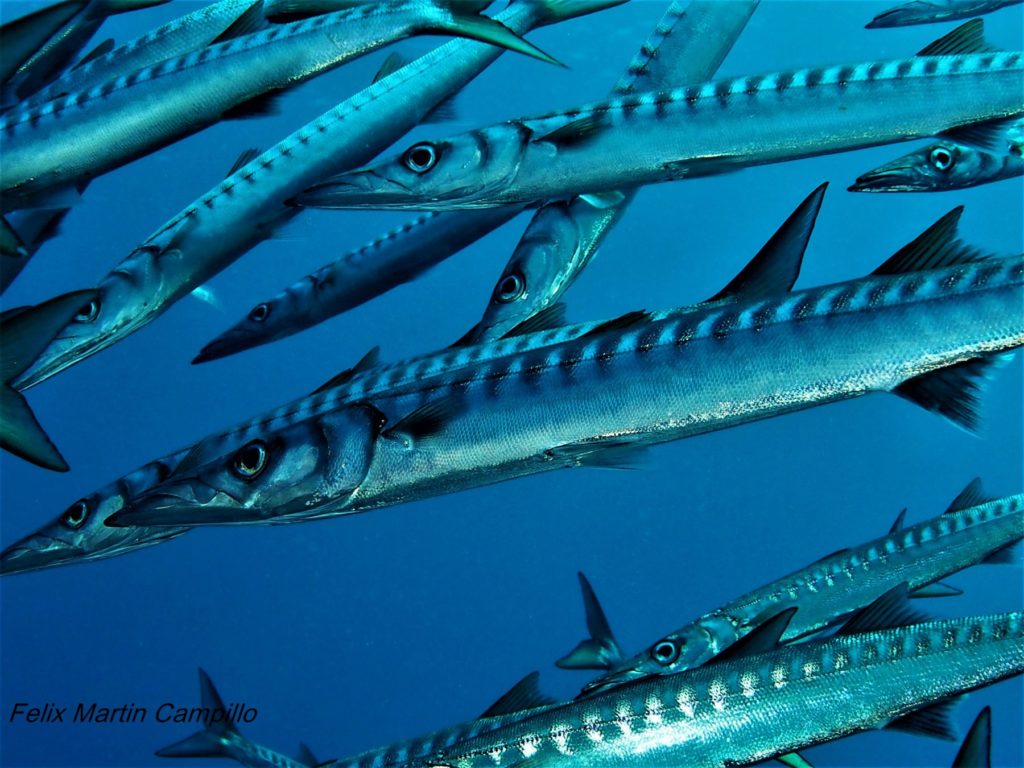
Na Blanca
Ideal dive for divers with less experience or when the Tramontana strikes, because it is in a highly protected area. We will drop anchor near the coast, near Cape Cavalleria, and we will go back and forth along its wall. We will explore its rocky bottom and we will be surprised by the banks of spits, medium-sized groupers and the multitude of octopuses that live in this area.
MAXIMUM DEPTH: 18 m
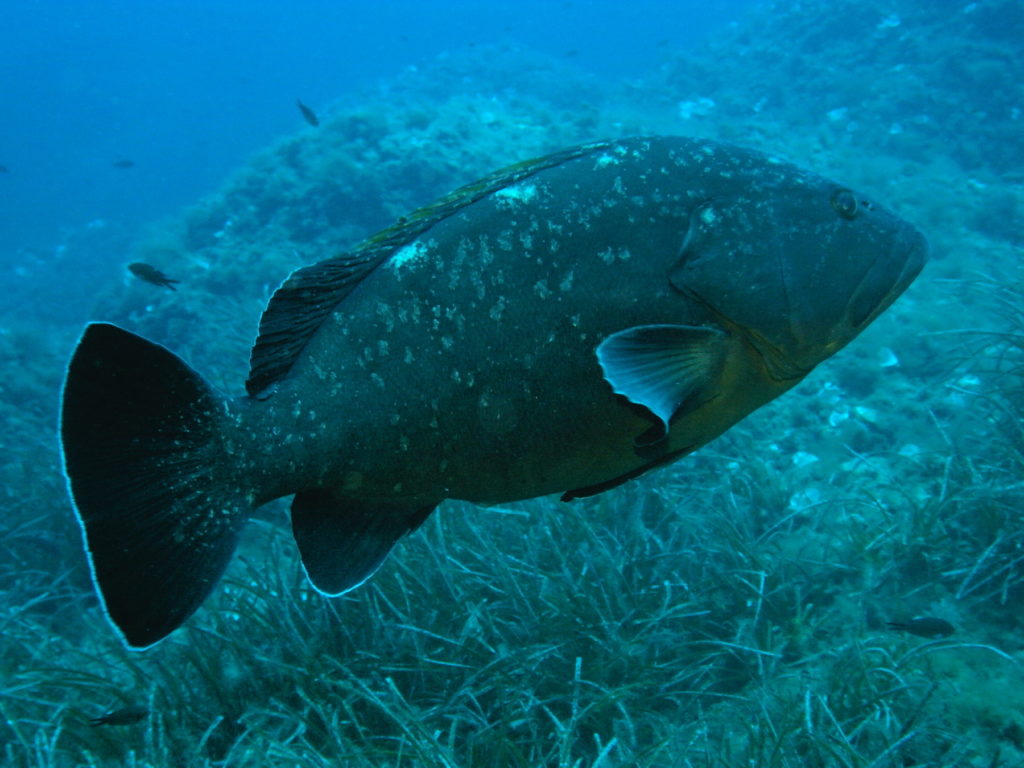
Cap Roig
Do you like depth? Is blue calling you? Dive in Cap Roig. Dive point located at Cape Cavalleria, where you can appreciate the real immensity of the north coast. We will drop anchor next to the wall, to a depth of about 15 meters. From this moment we will follow the outline of the cape, seeing how the endless low and low wall. The visit will be round trip, leaving first the wall on our left, then on our right. Although we always have our eyes on one of the most intense blues on the island, we should not overlook the rocks that we come across, as it is one of the best places to find large groupers, gigantic dentex, small bundles and octopuses.
MAXIMUM DEPTH: 40 m
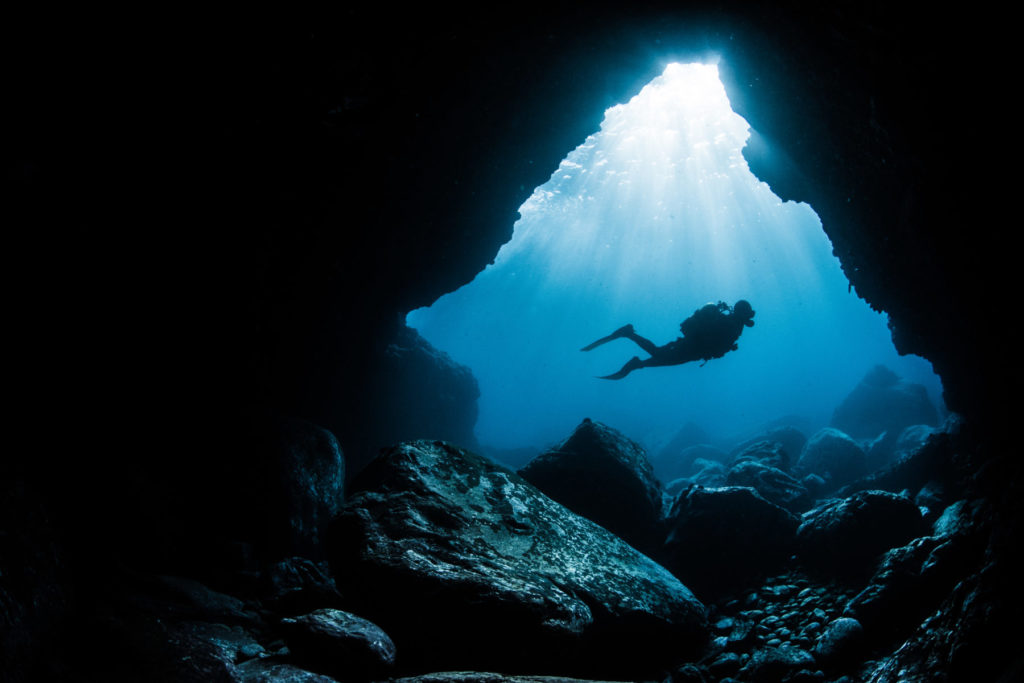
Queso Suizo
While this is our most distant dive, the 20 minute trip will be worth it. It is located outside the marine reserve in Punta Grossa. This “cheese” is a large, fully perforated rocky mass. This morphology allows multiple and fun routes. Back at the boat, we will cross a stone arch which seems to be taken from the Talayotic era. Spectacular backlights, Swiss cows, conger eels, octopuses and a wide variety of small fauna will make the trip interesting.
MAXIMUM DEPTH: 25 m

